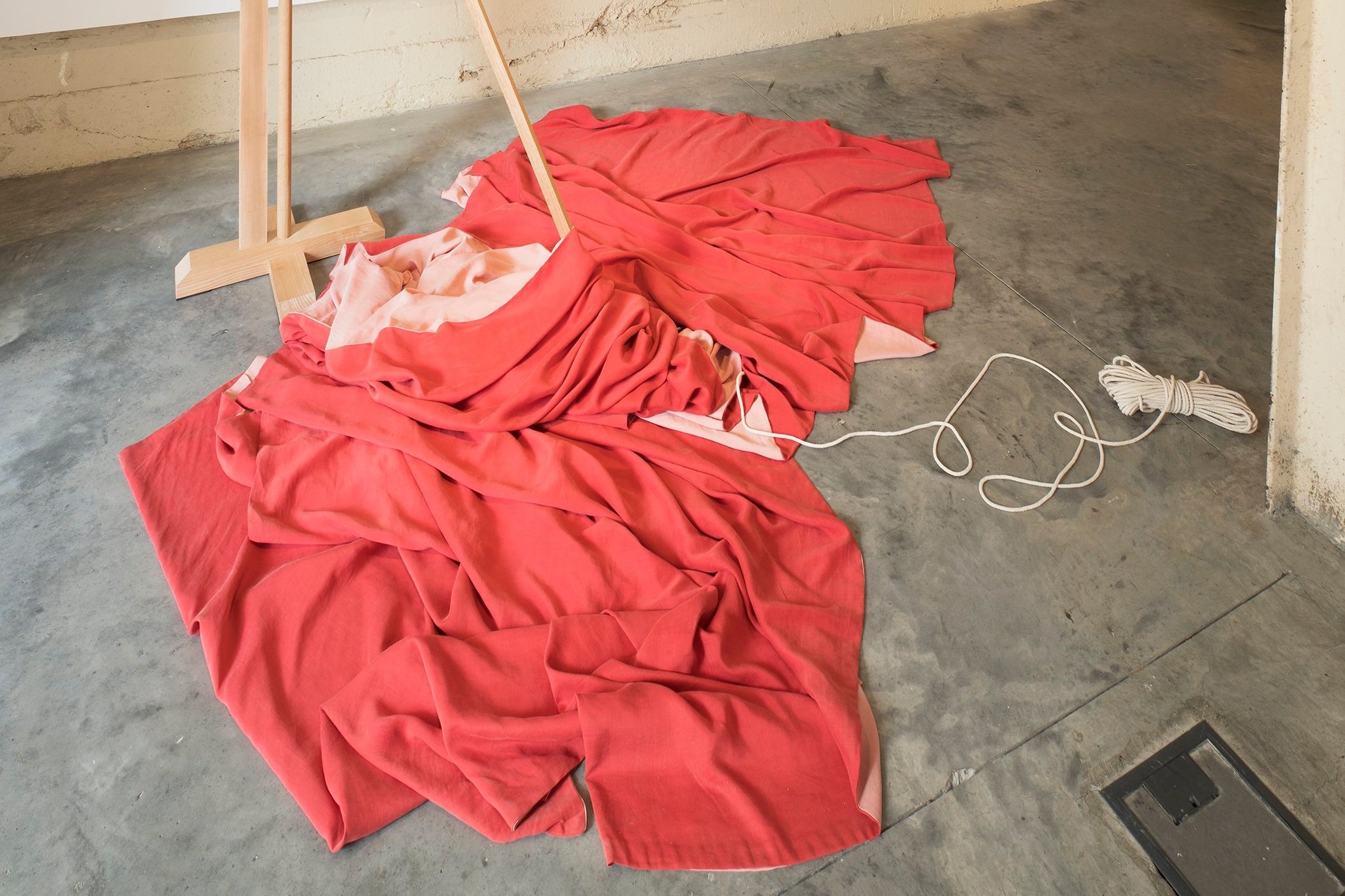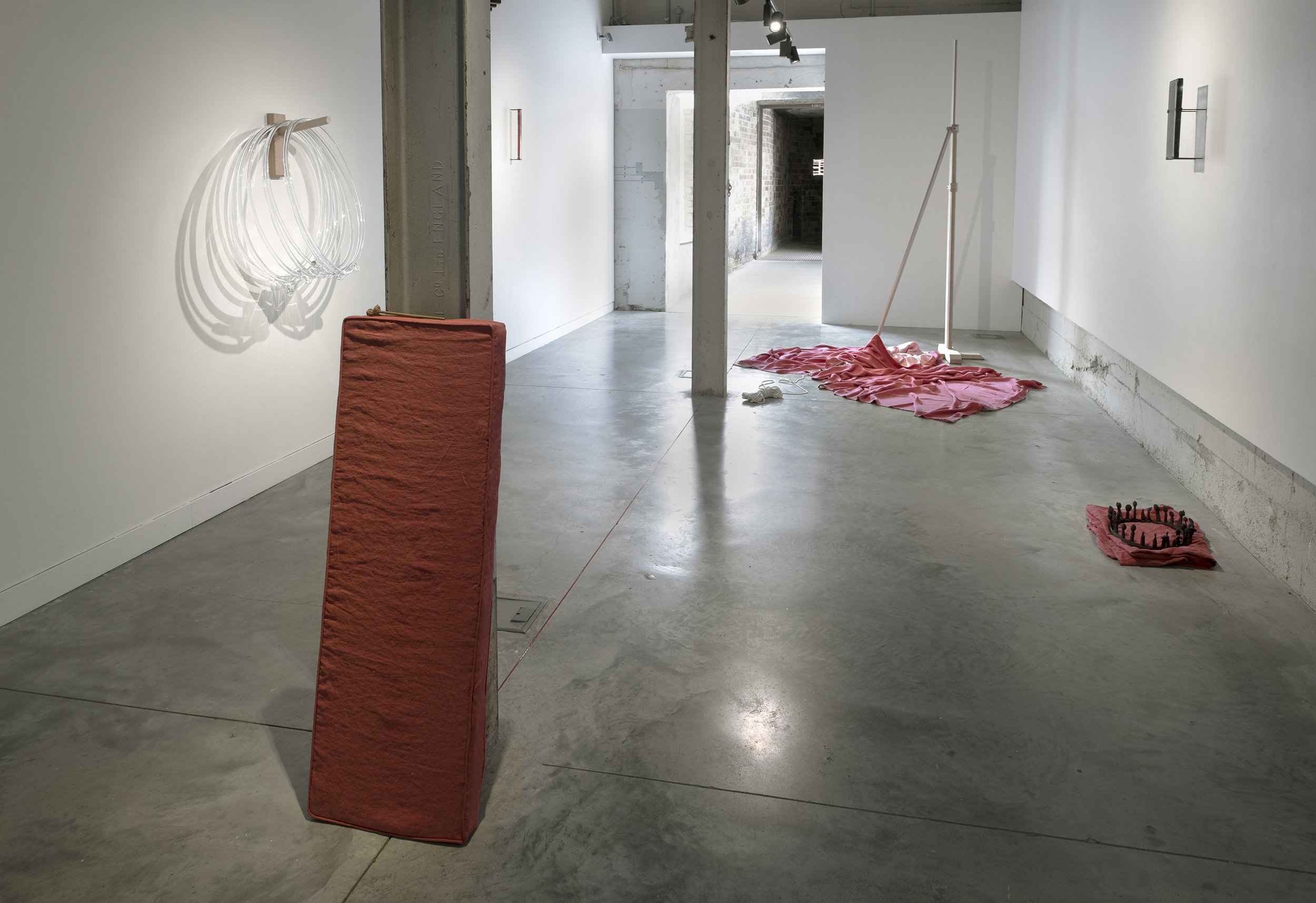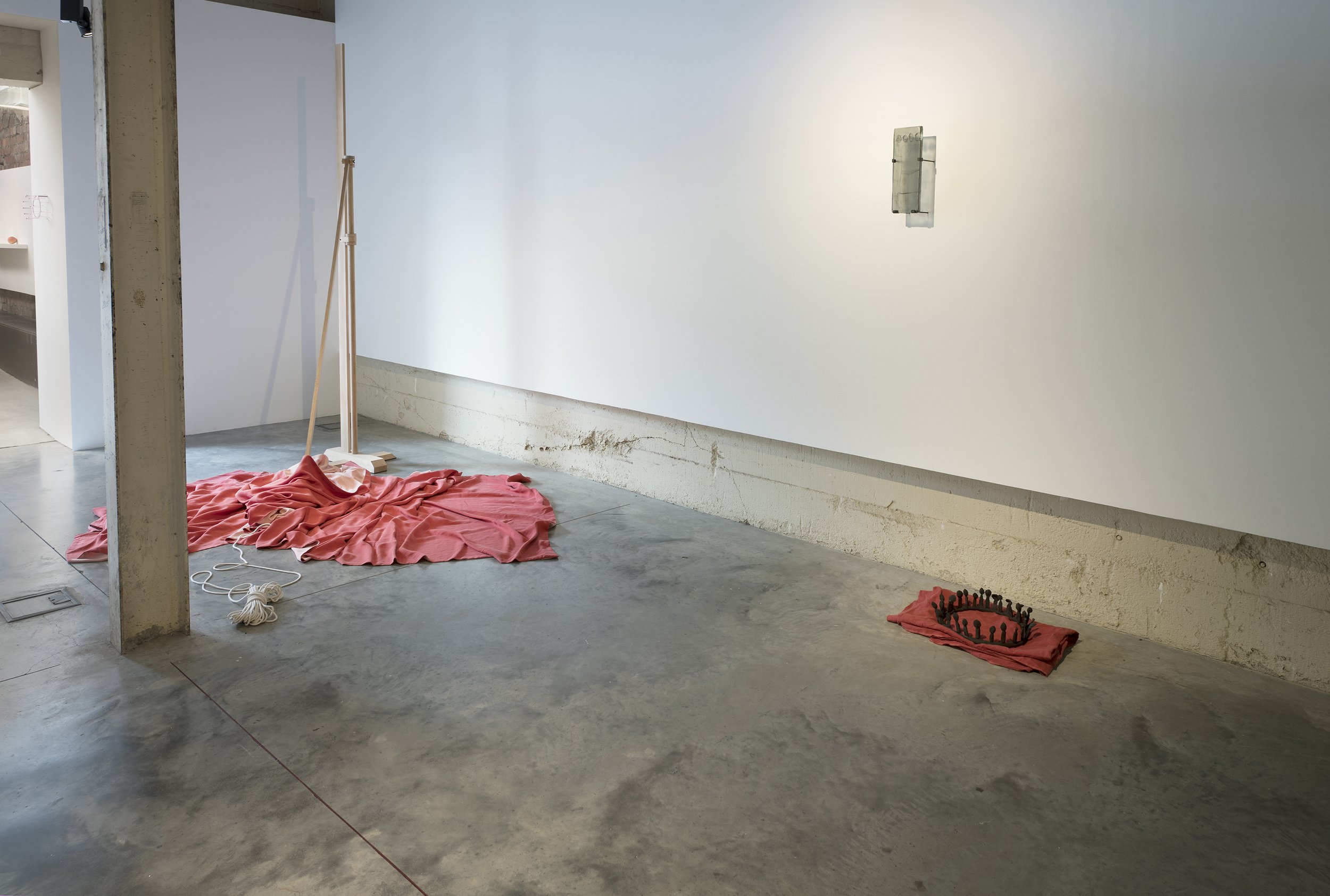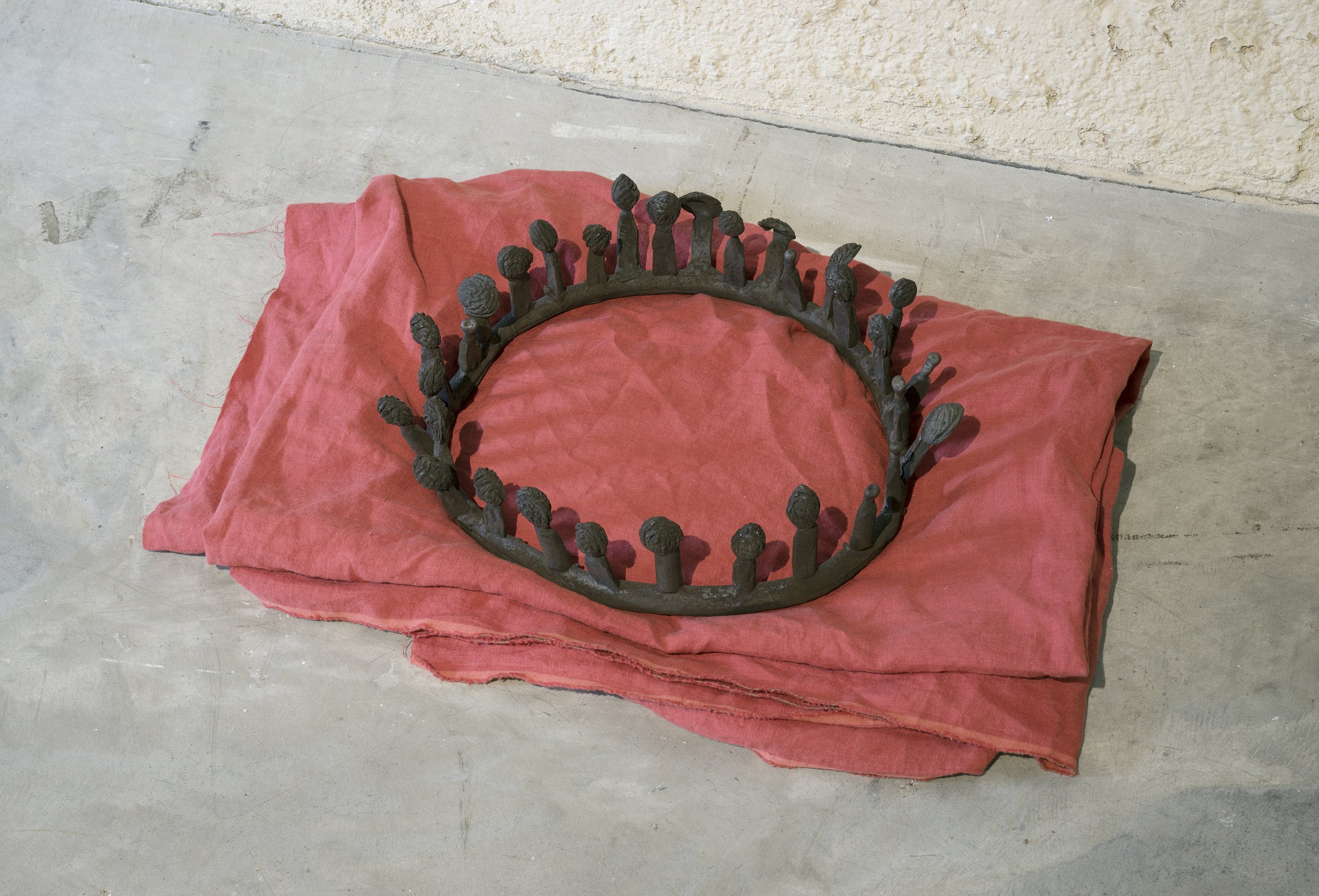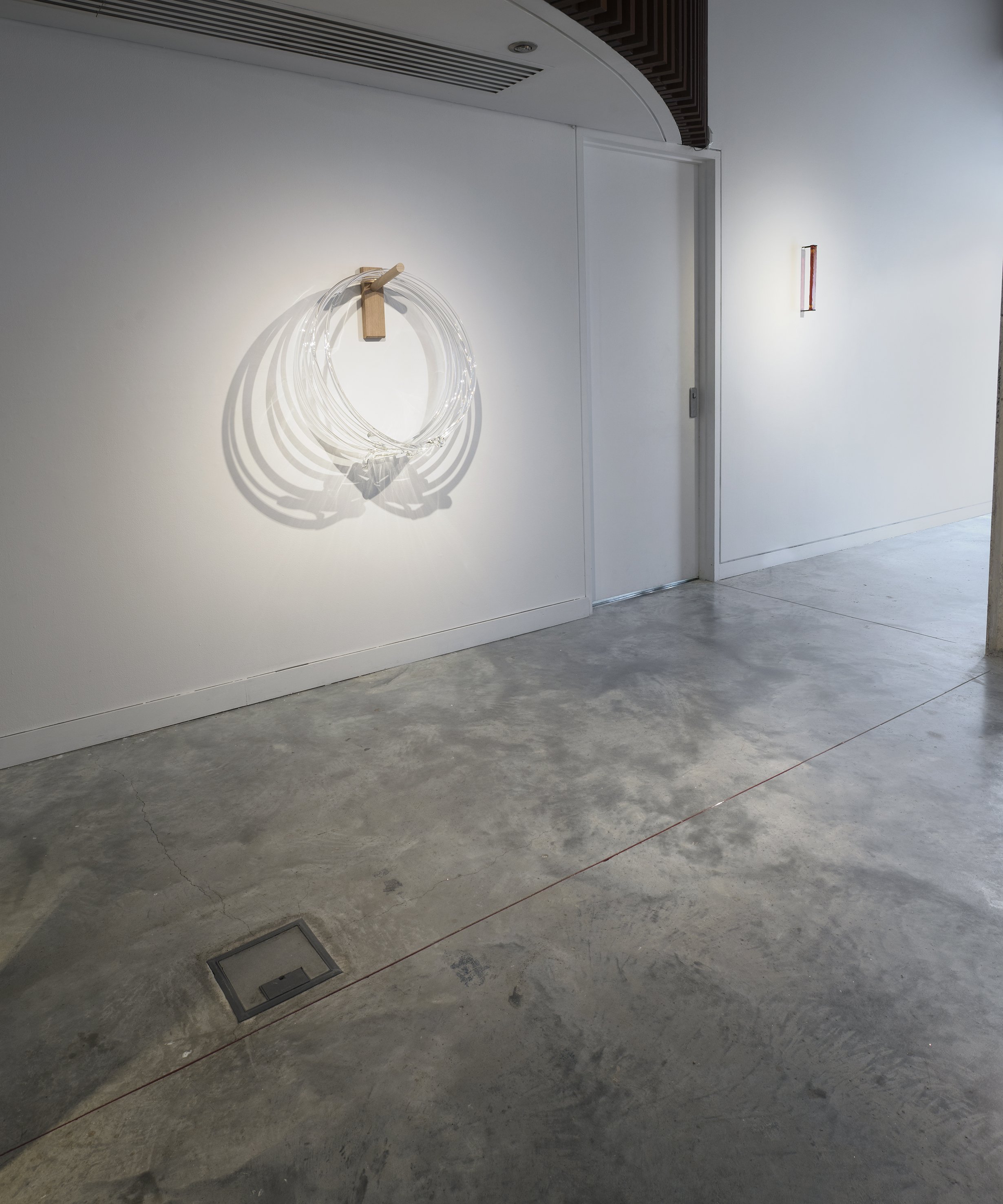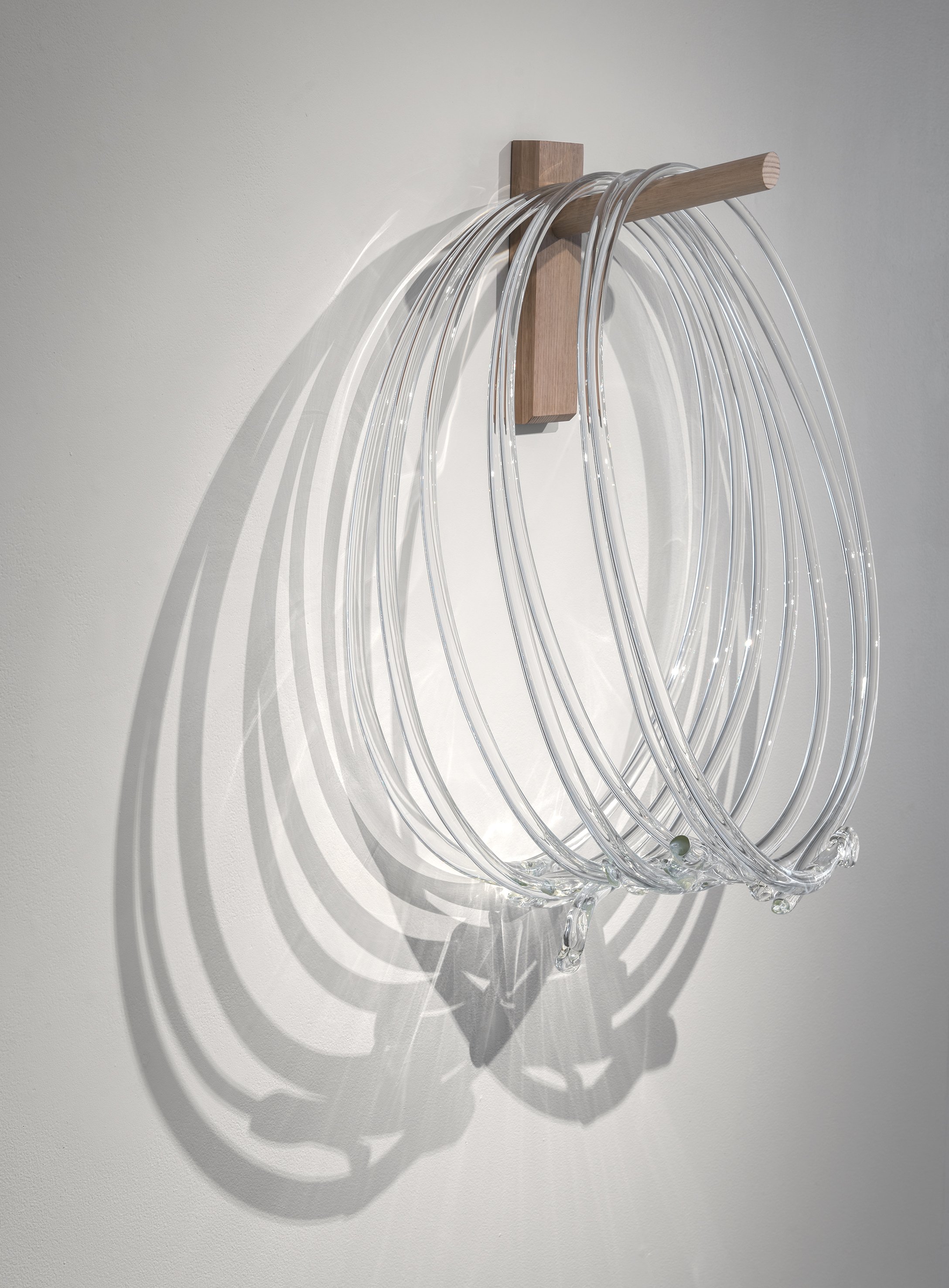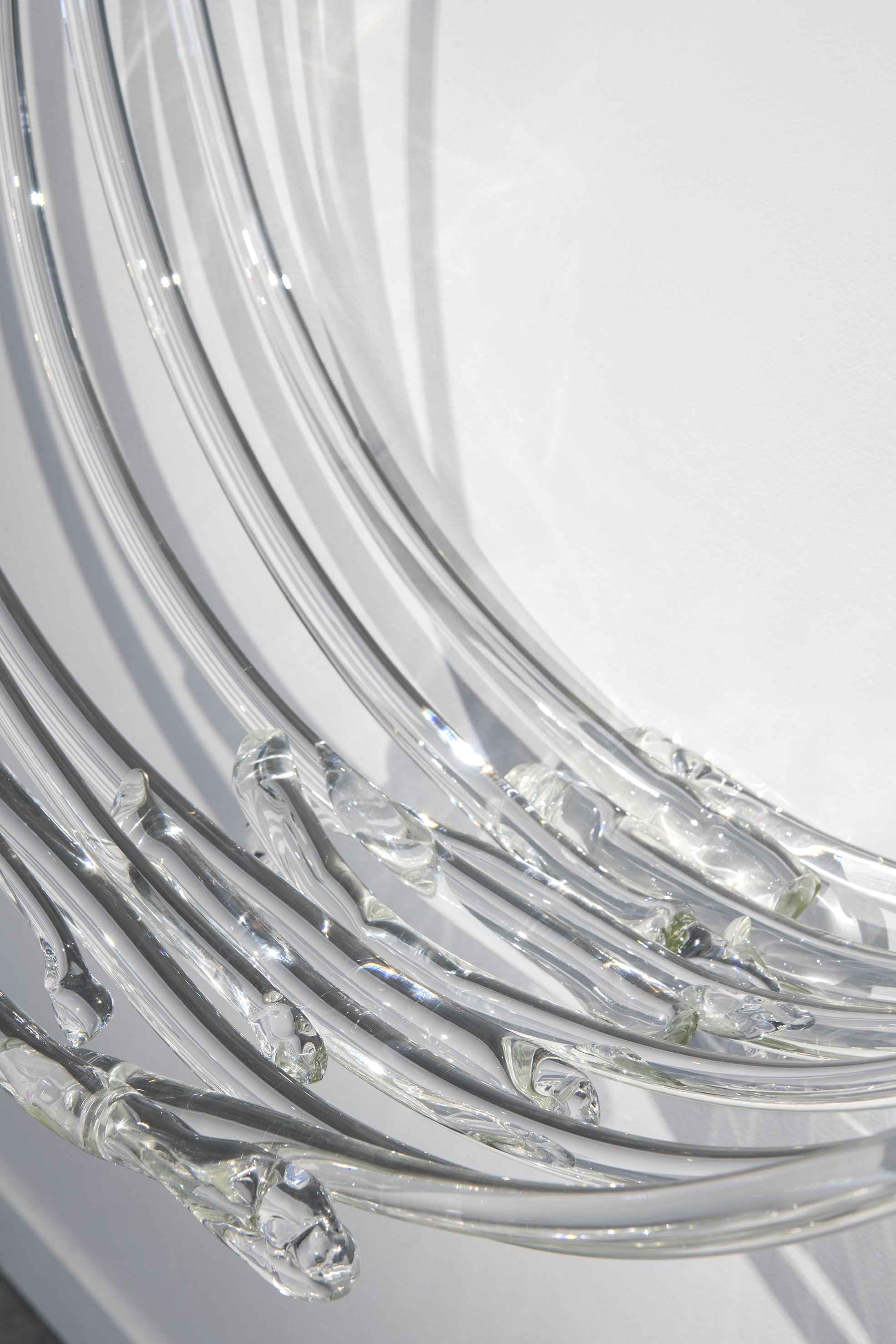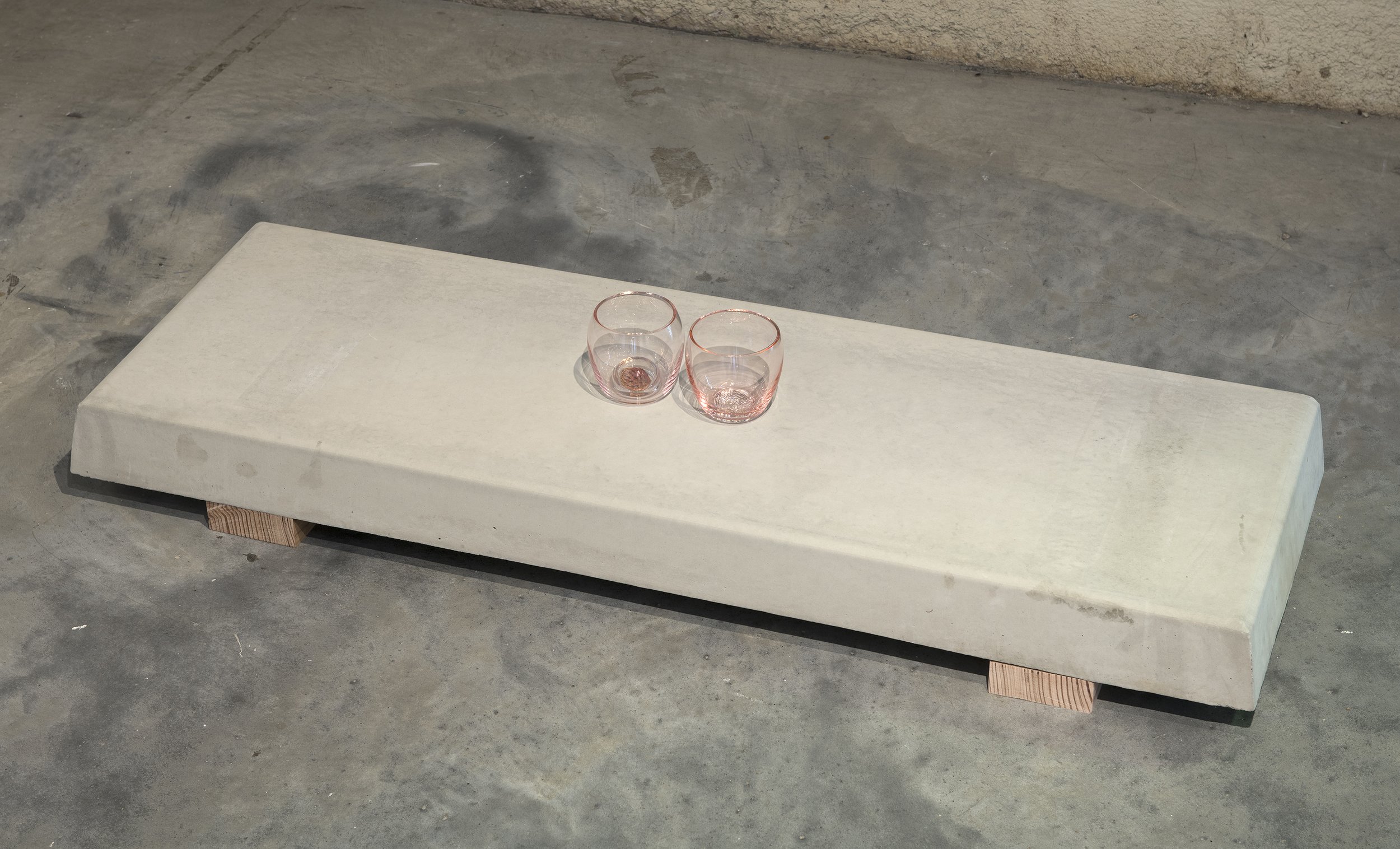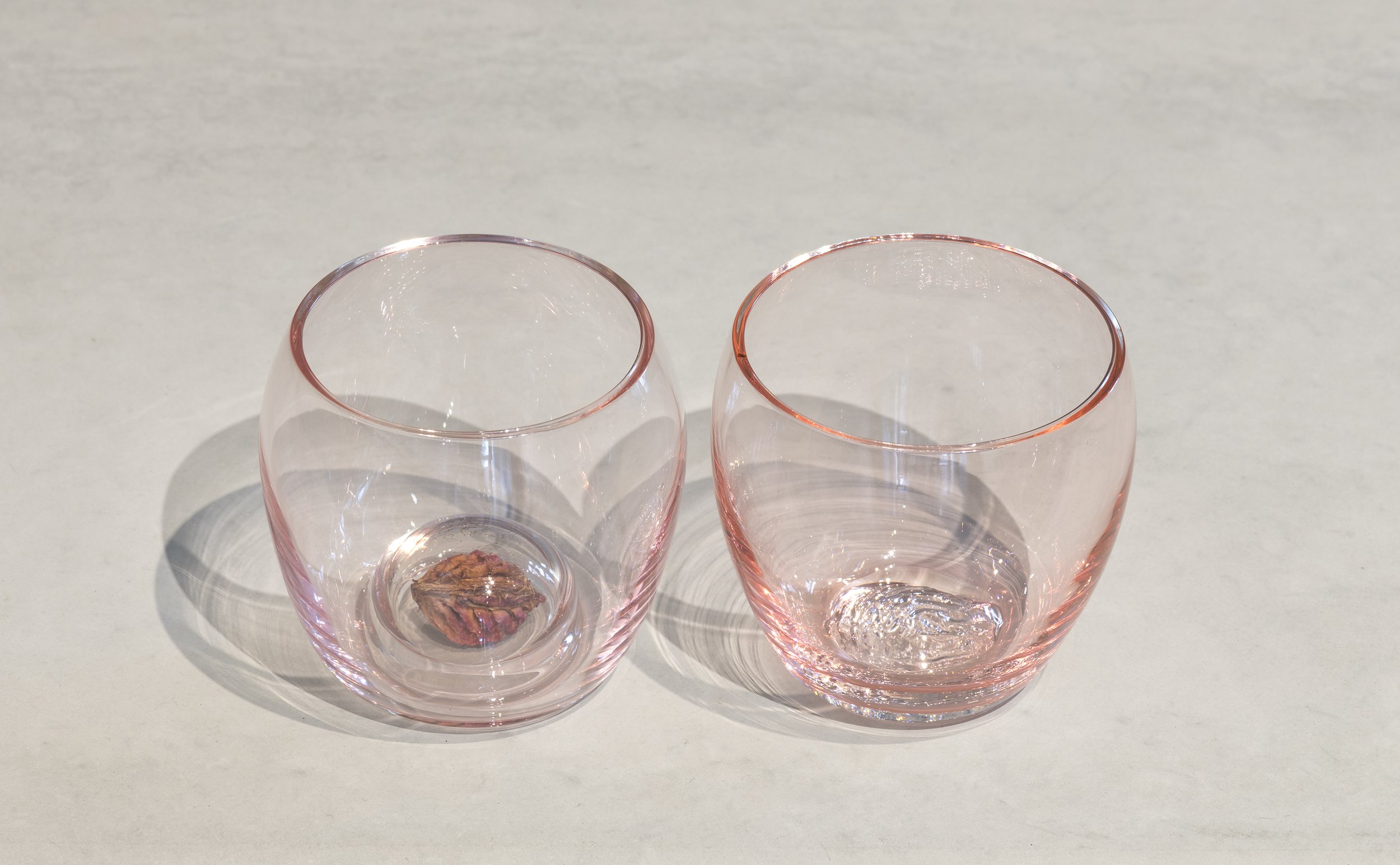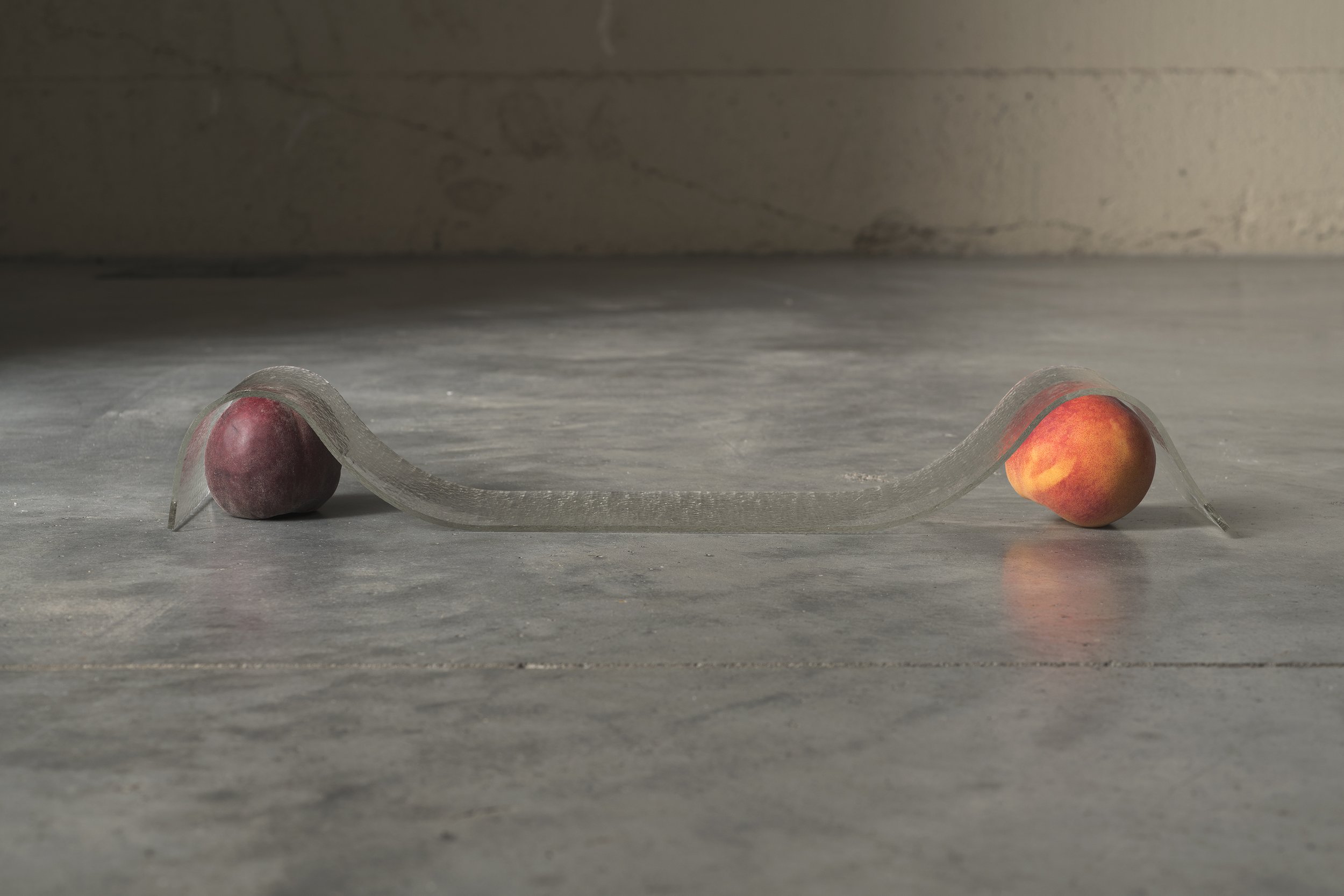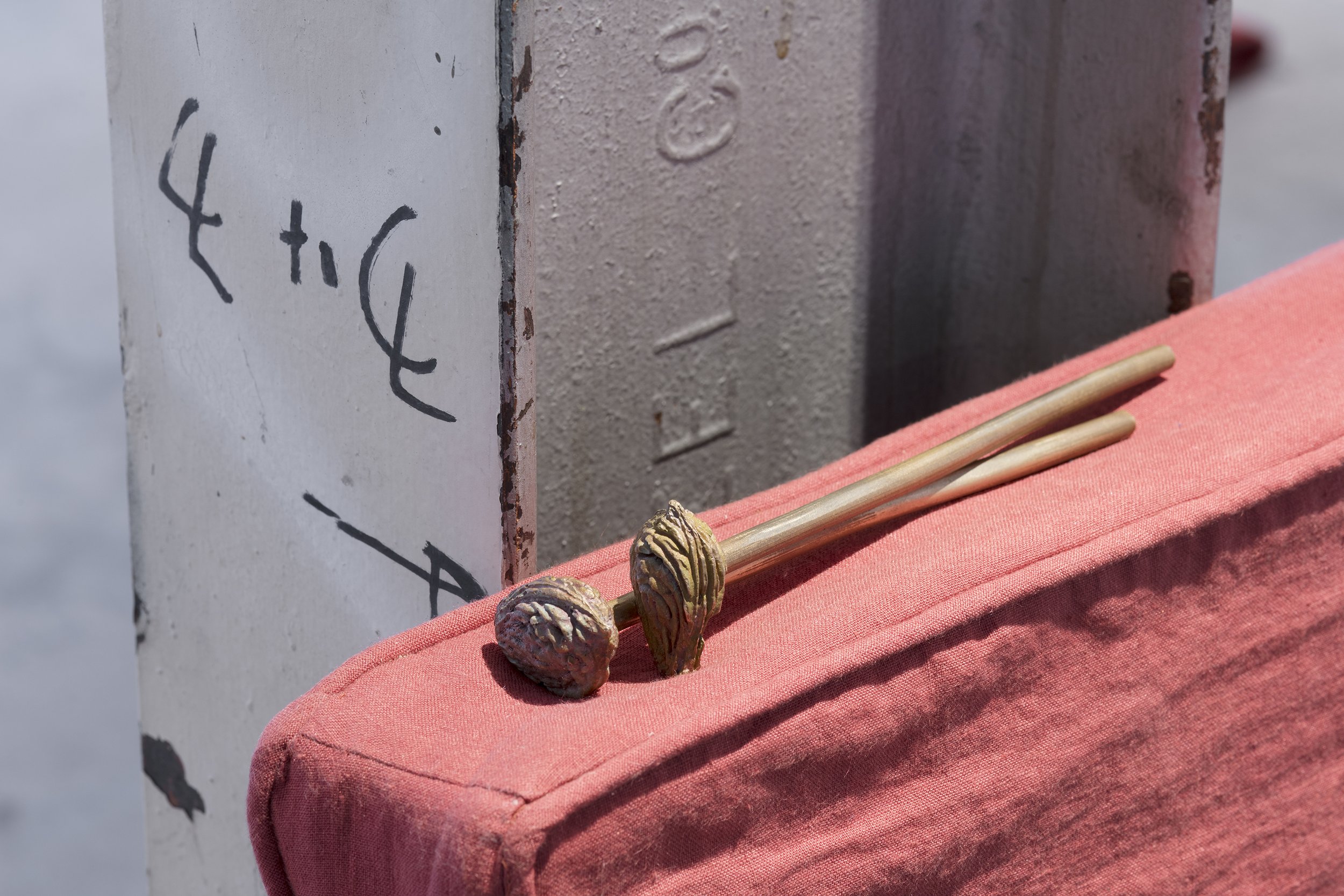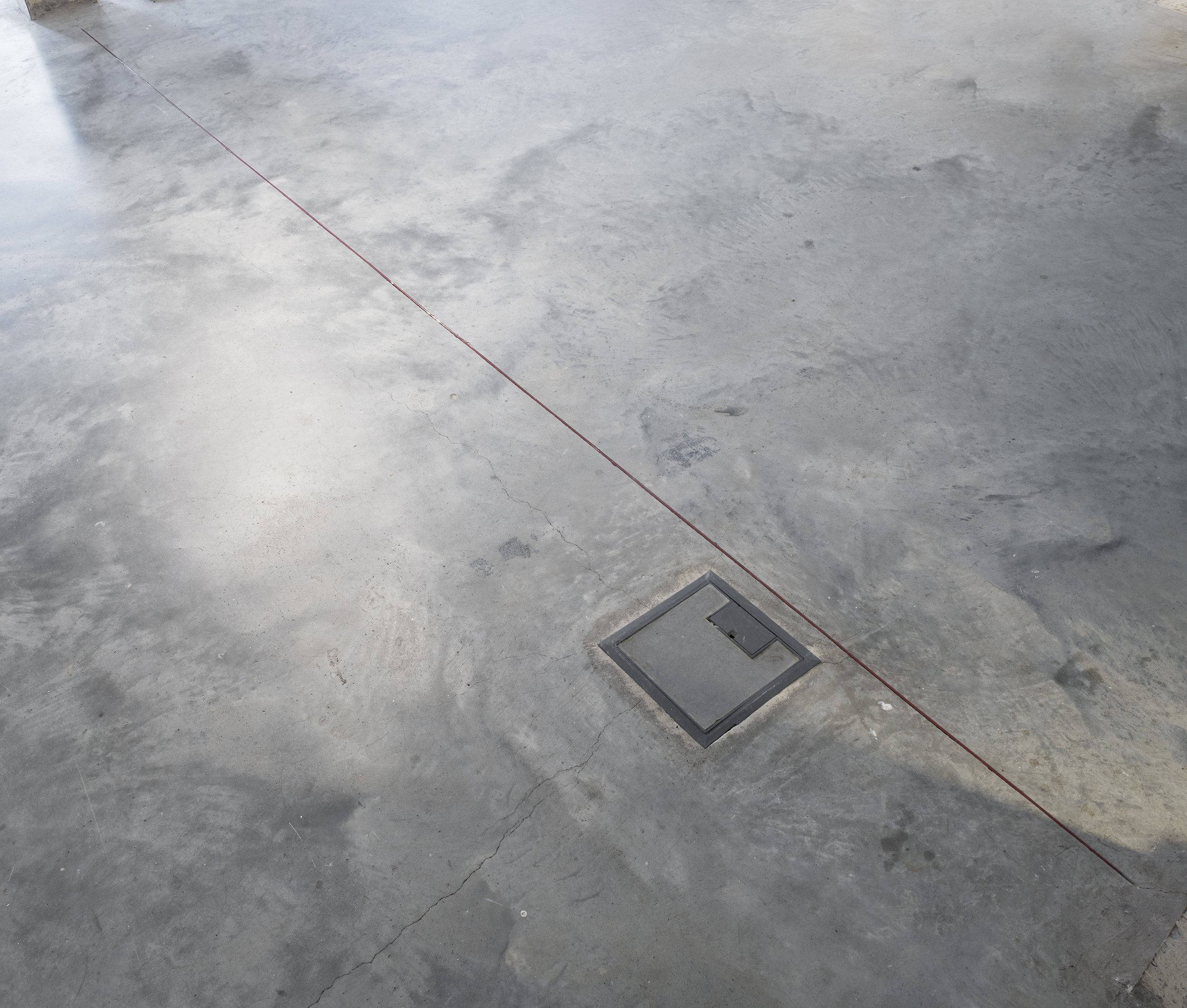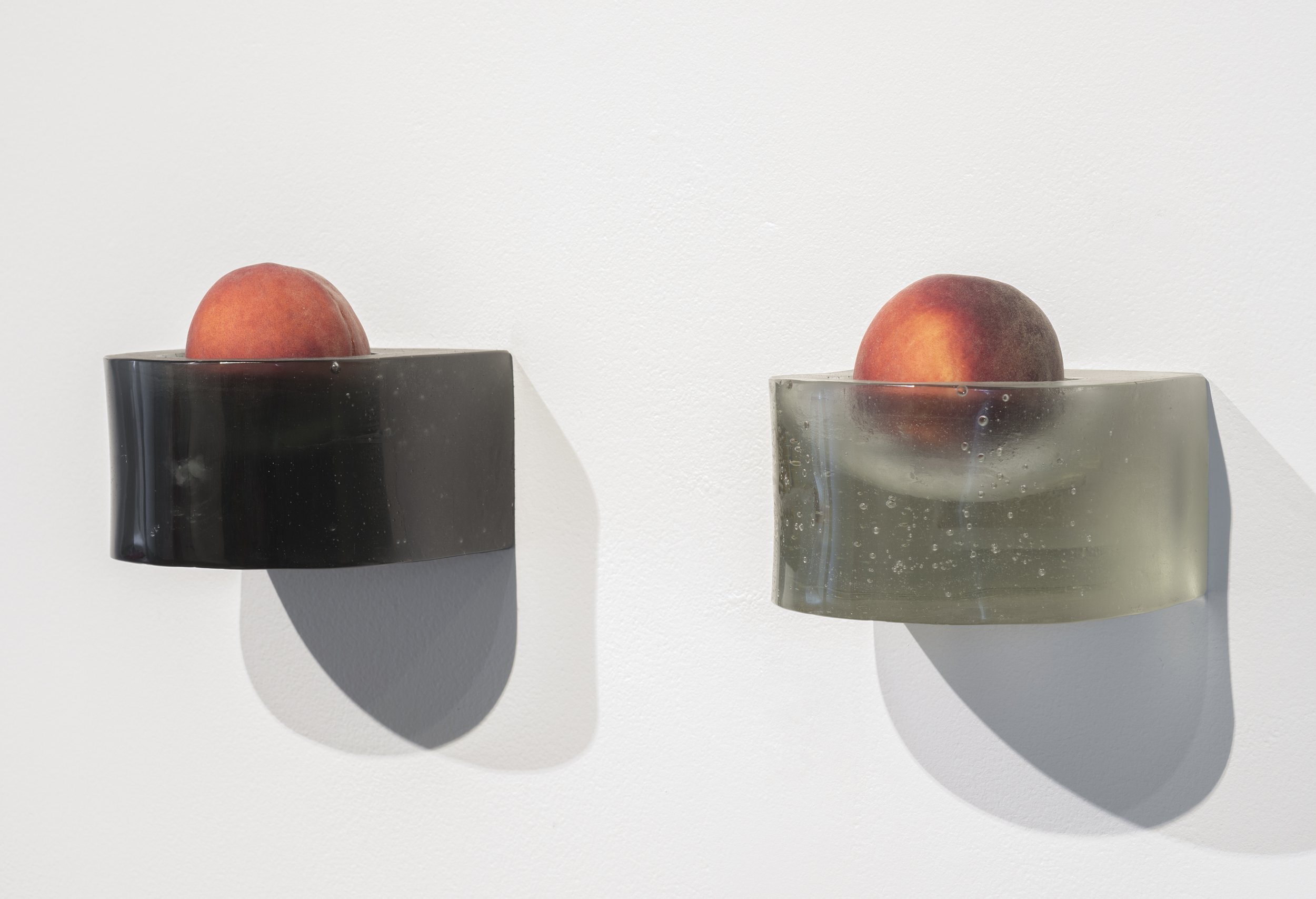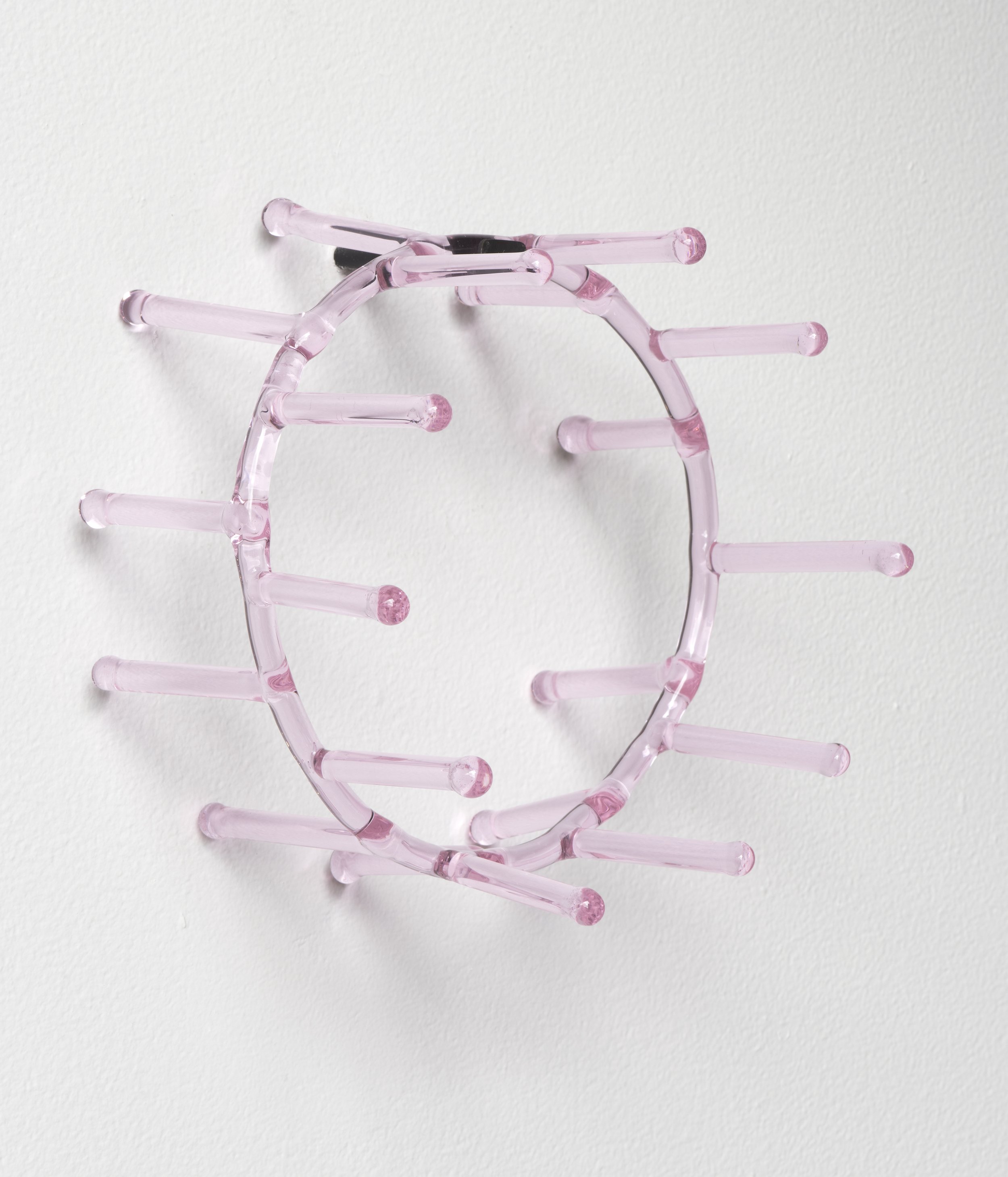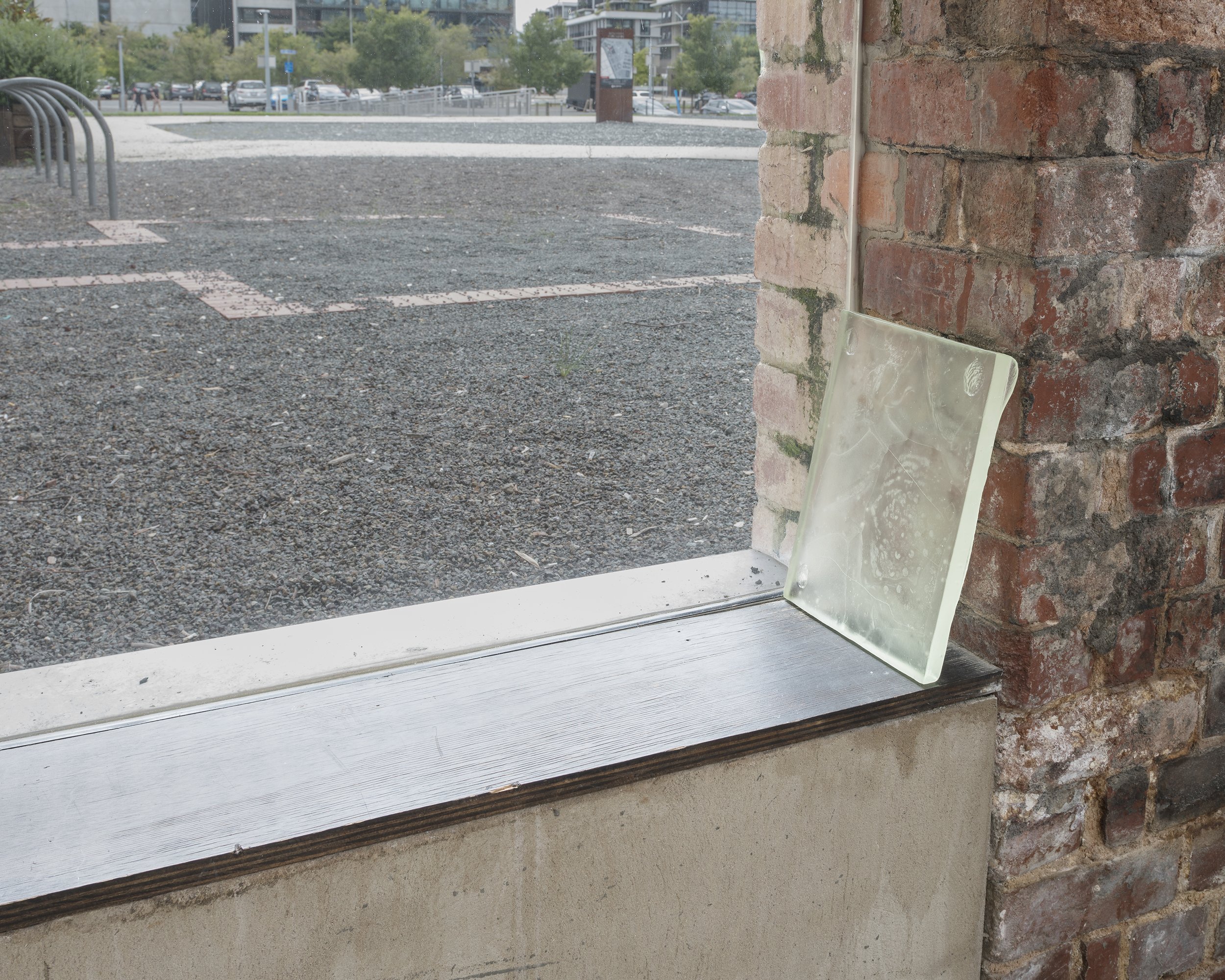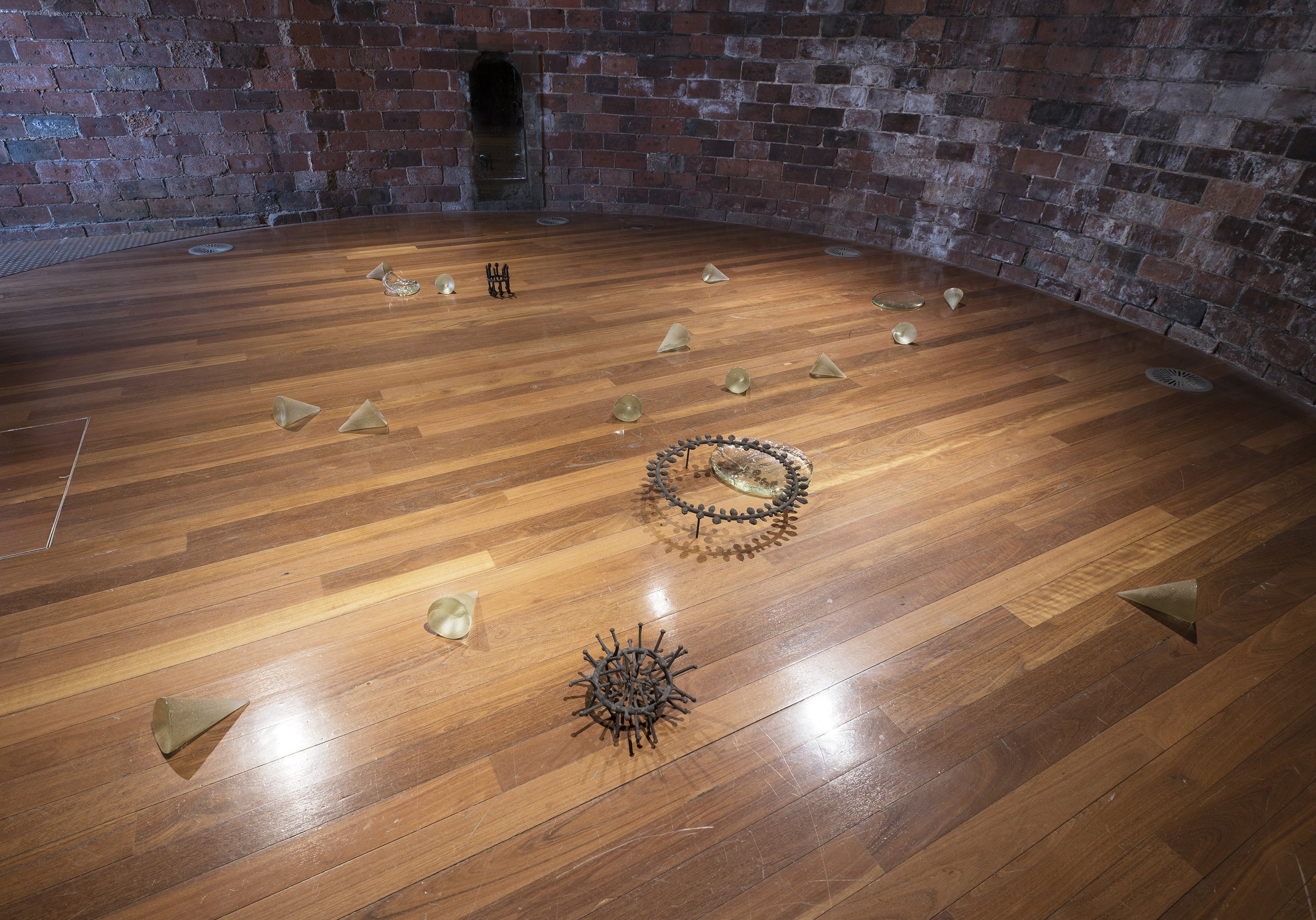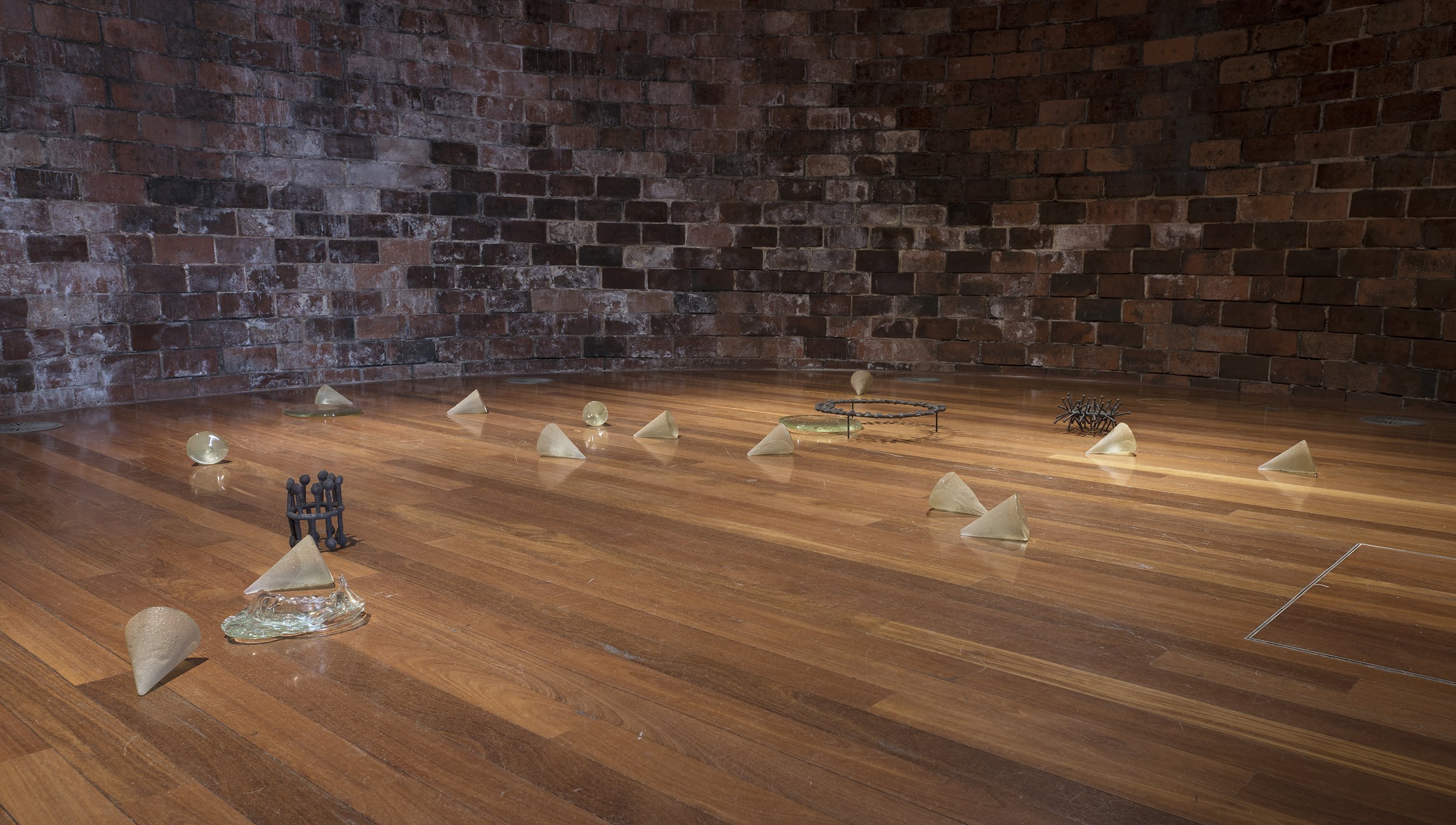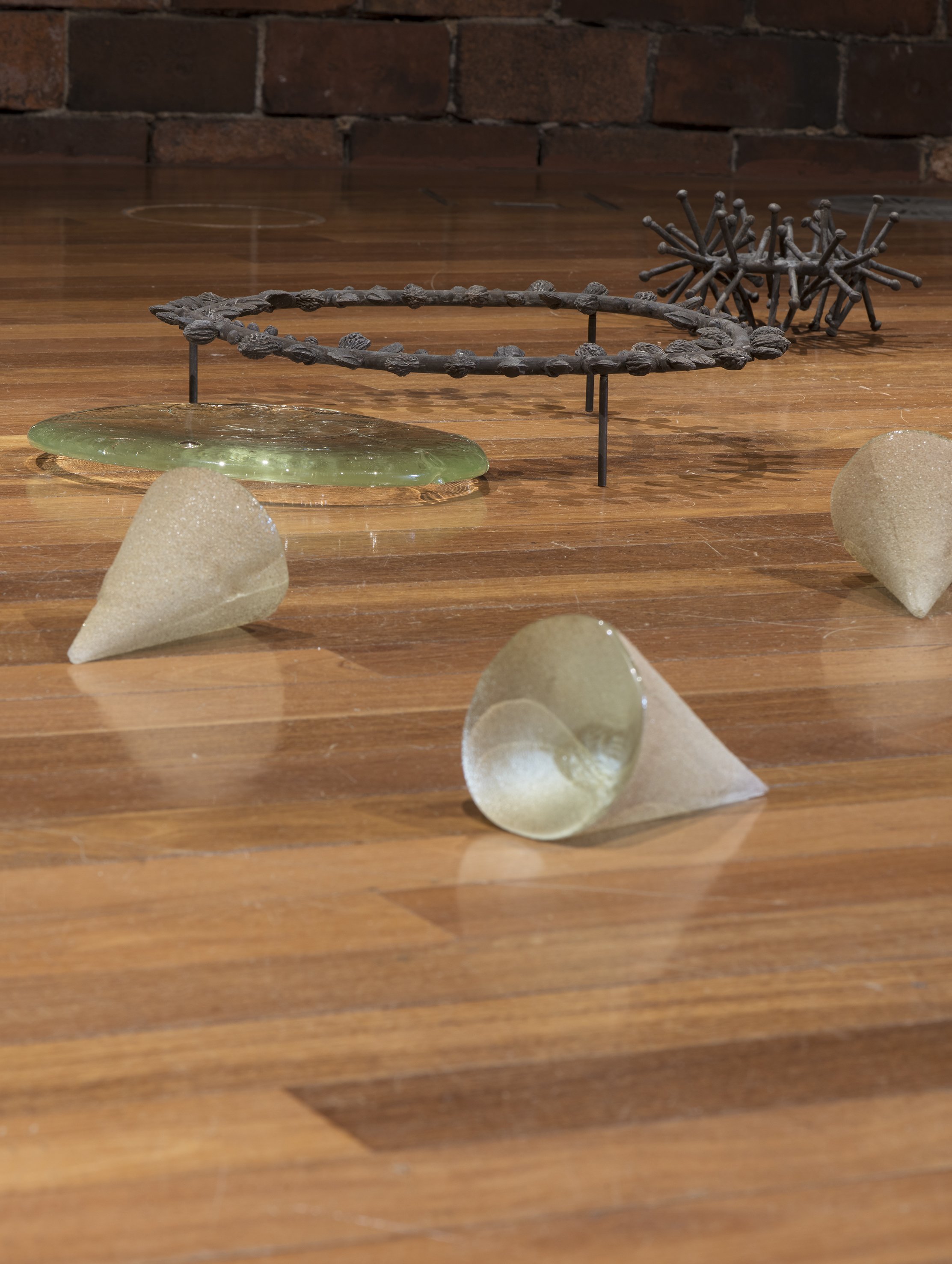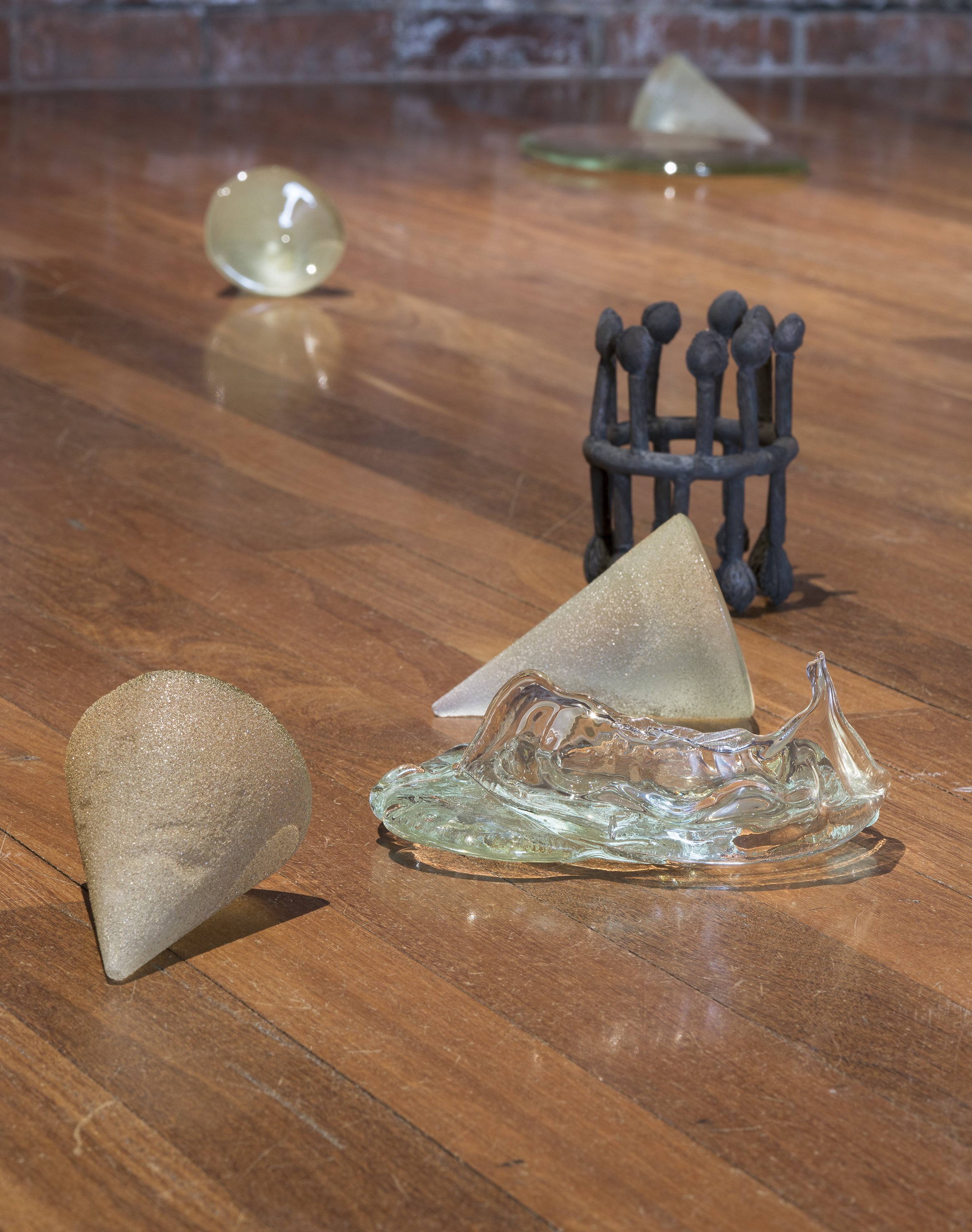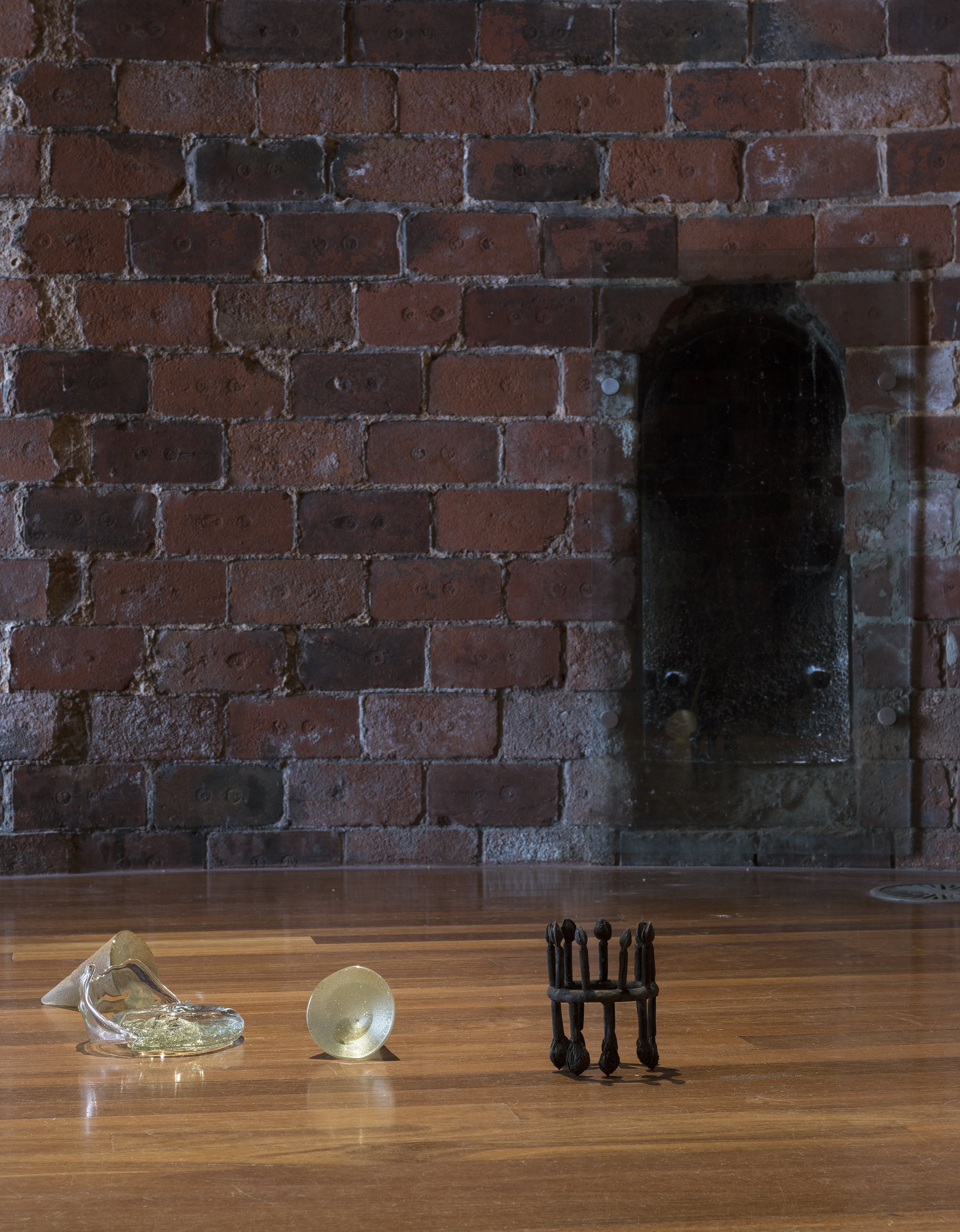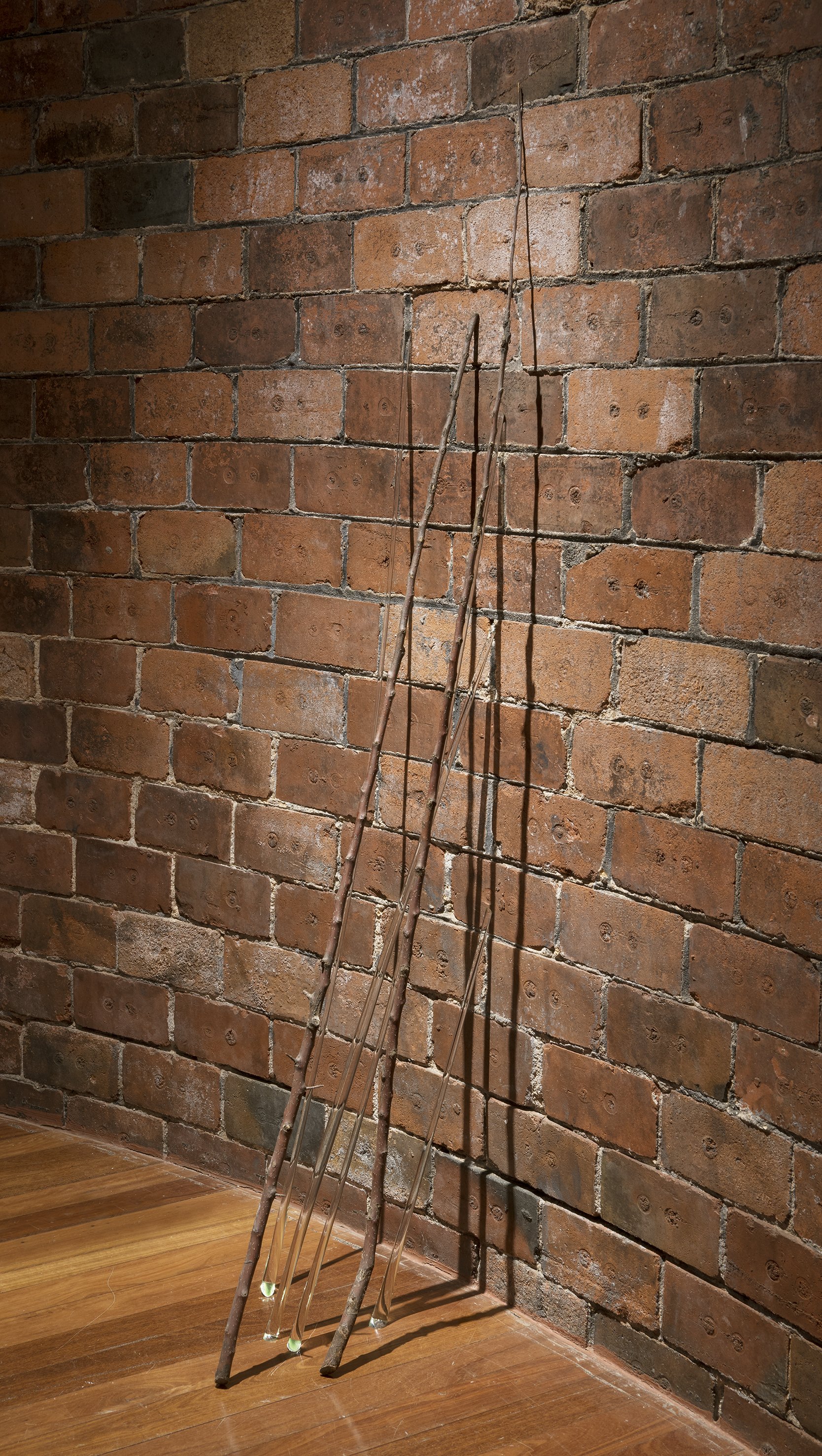Fall (Detail), Linen and cupro fabric, cotton, timber, steel fixings, cotton rope, 235 × 170 × 250cm (variable), 2022. Installation view, Canberra Glassworks Gallery.
Photograph: Brenton McGeachie
Catalogue Essay - Aimee Frodsham
In this installation, the works act as a root system planting themselves within the gallery, spreading in many directions as they lead the viewer through the space. The story starts in late summer and continues through into early spring to complete a single seasonal cycle. Bradley uses the peach and other stone fruit as a symbol to consider the phases of growing, feeding, and rotting.
The story of the peach can be traced back to 1,000 BC, originating from China where they grew as a wild fruit, then spreading to Persia where they begin to be cultivated. After Persia was invaded by Alexander the Great, seeds were taken to Europe where orchards began to thrive. Peaches were believed to be introduced into Australia in 1890 where they grew from farm gardens on stolen land. This rich and complex history provides an insight into the many layers of meaning embedded in this symbolic fruit. This tree has traversed continents for thousands of years. It is cultivated to create a fruit that can bruise and be gone within days.
Bradley’s choice of multiple materials in this exhibition refers to these multifaceted narratives. By making the objects human-scale, the viewer is able to relate their own experiences to the work. Mirroring the principles of a tree producing fruit and seeds, Bradley's pieces are made through the process of casting or moulding which allows for duplication. Within her making process she considers the body as a mould for producing, in the same way that each seed holds a blueprint for a future plant.
The tender refers to flesh both human and fruit, engaging our senses of sight, smell, and touch. This bodily association provides links not only to fertility but also how we experience beauty, kindness, and pleasure.
This new body of work was developed as part of the Artist in Residence program at Canberra Glassworks in 2021-22, which is supported by the Australia Council for the Arts. All glass works were developed with assistance from Canberra Glassworks artists.
Above - the tender, installation view from Gallery 1, Canberra Glassworks
Peach Crown, Bronze, linen, 10 × 76 × 50cm, 2020. Installation view, Canberra Glassworks Gallery. Photograph: Brenton McGeachie
Above: Rings, Pulled glass rings, timber, steel, 80 × 75 × 34cm, 2022. Installation view - Canberra Glassworks.
Photograph: Brenton McGeachie
Below: Halves, Blown and stamped glass, timber, concrete step, peach stone, 25 × 110 × 30cm, 2022. Installation view - Canberra Glassworks.
Halves (Detail), Blown and stamped glass, timber, concrete step, peach stone, 25 × 110 × 30cm, 2022. Installation view - Canberra Glassworks.
Two Fruit, Kiln-formed glass and peaches, 8 × 50 × 11cm, 2022.
Above: Stamps, Bronze, linen, timber, thread, 103 × 40 × 7cm, 2022.
Below: Two Stones, Cast glass, steel brackets, 42 × 5 × 10cm, 2022.
Above: Line, 2mm round flame-worked glass, gallery floor, 2022
Below: Line (detail), 2mm round flame-worked glass, gallery floor, 2022
Above: Gift, Cast glass and peaches, 10 × 40 × 13cm, 2022.
Above: Cherry Crown, Flame-worked glass, 17 × 17 × 12cm 2022.
Photograph: Brenton McGeachie
Below: Four Stones, Cast glass, steel bracket, 37 × 15 × 14cm, 2022.
Above: Fairweather, Cast glass, 31 × 22 × 3cm, 2022. Installation view, Canberra Glassworks.
Above: Late Spring - installation view of Gallery 2, Canberra Glassworks, Sand-cast glass, hotshop glass, bronze, steel, Dimensions variable, 2022.
Photograph: Brenton McGeachie
Below: Late Spring (Details), Sand-cast glass, hotshop glass, bronze, steel, Dimensions variable, 2022
Apple Sticks - installation view, Gallery 2, Canberra Glassworks, Pulled glass cane, apple sticks, 140 × 23 × 27cm, 2022. Photograph: Brenton McGeachie.
